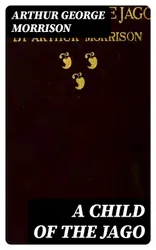In "A Child of the Jago," Arthur George Morrison crafts a vivid and harrowing narrative set in the impoverished district of the Jago, a fictional representation of London's slums in the late Victorian era. Employing a gritty, naturalistic literary style, Morrison intricately weaves the lives of the impoverished with a focus on social realism, presenting the struggles of the protagonist, a young boy named Dicky Perceval, amidst a backdrop of crime, despair, and the relentless cycle of poverty. The book reflects the author's critical view of the socio-economic conditions of the working class, utilizing rich, detailed descriptions and dialogue that bring the stark realities of life in the Jago to the forefront. Arthur George Morrison, an accomplished journalist and novelist, drew upon his personal experiences and observations while growing up in the East End of London, which informed his depiction of urban life. His deep empathy for the marginalized, combined with a keen understanding of social issues, propelled him to write this poignant work that not only critiques the socio-political landscape of his time but also humanizes its characters, offering a compassionate portrayal of their desires and struggles. For readers seeking a profound exploration of social inequality and human resilience, "A Child of the Jago" is an essential read. Morrison's insightful narrative invites reflection on the historical and contemporary issues of urban poverty, making it a significant contribution to both literary and social discourse.

Read and listen free for 14 days
Cancel anytime
Try free now